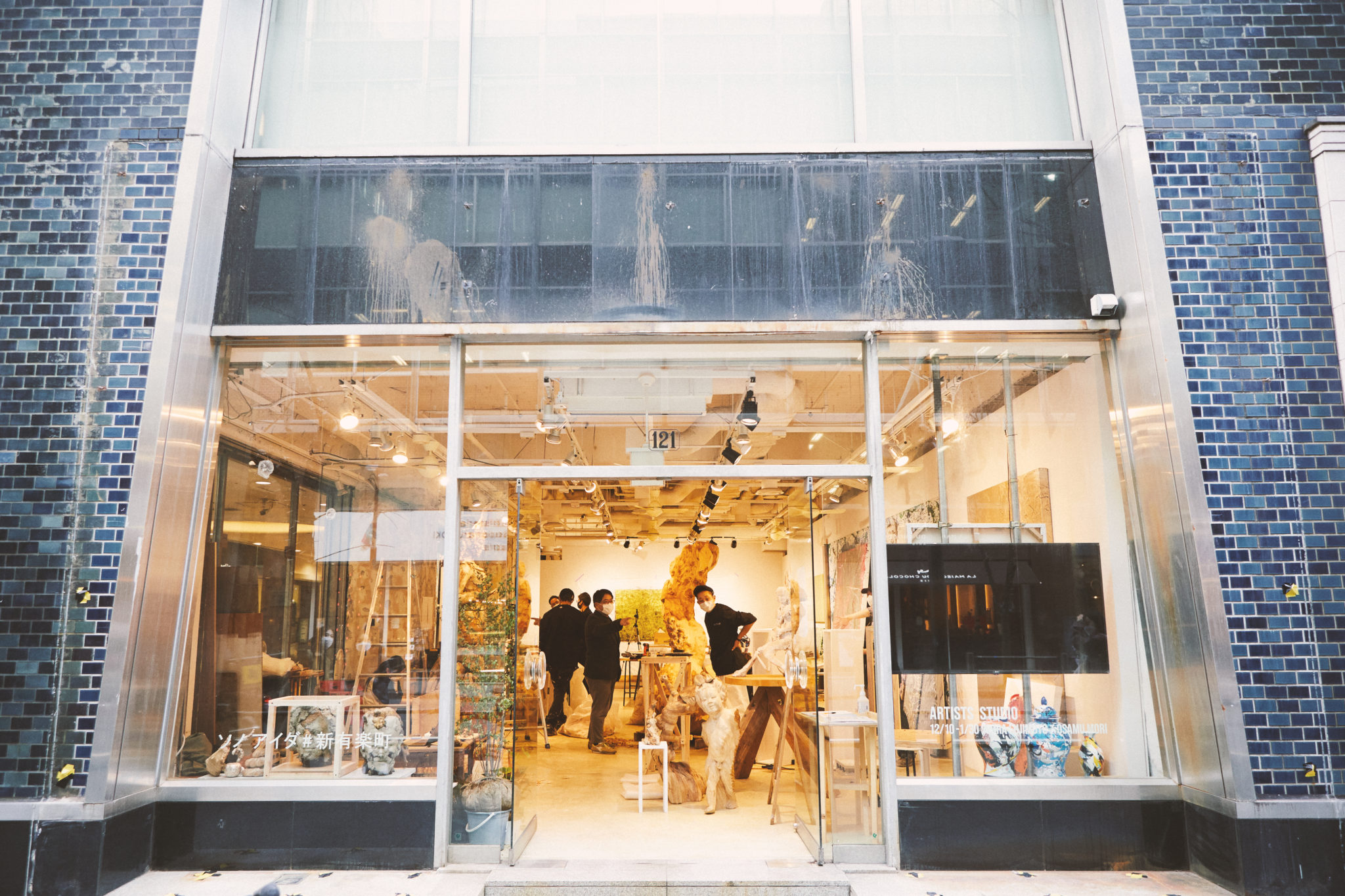Received a Master’s Degree (in theater studies and dance) from Waseda University, Graduate School of Letters, Arts and Sciences. Active as a writer mainly on topics related to contemporary theater, traditional performing arts, ballet, dance, musical and opera. She currently writes regularly for the online magazine Ontomo, focusing on theatre from an auditory perspective (“Mimi kara miru butai,” https://ontomo-mag.com/tag/mimi-kara-miru/), the ballet magazine Swan Magazine (“Bare fan ni okuru opera mangekyo”), and the ballet-focused online publication Ballet Channel (“Suteji kosaten,” https://balletchannel.jp/genre/ayako-takahashi). First prize winner at the 10th Japan Dance Critics’ Award.
撮影:吉田夏瑛
Started in February 2022, YAU is a project aimed at “art urbanism,” urbanism enhanced by artist participation and inspiration from artworks or creative community development, in the Yurakucho area. Its results were exhibited at the YAU TEN event, held from May 20 to 27.
A place that nurtures art
One of the core initiatives among YAU’s various projects is the Exhibition, which showcases works mainly by young and emerging artists. All of the works were either created in Yurakucho or themed on the neighborhood.
For example, SO x Ryuichi Maruo’s “Maruo : Landscape for 2 buildings at Yurakucho” and “SO: Urbanism Ambience” focused on the “perspective” between the Yurakucho Building, which houses the YAU Studio, and the Shin-Yurakucho Building, both of which are to be demolished in 2023. Along with the various sounds of Yurakucho, views from both inside and outside the buildings were projected on a screen affixed to the windows of the Yurakucho Building. Taisuke Koyama, for his work “Traces,” collected sludge, soil, and fallen leaves from the rooftops of the Shin-Yurakucho and Shin-Kokusai Buildings and mounted traces of them in bright blue on the windows of the YAU Studio. Both sets of works provided new ways of looking at Yurakucho through windows.
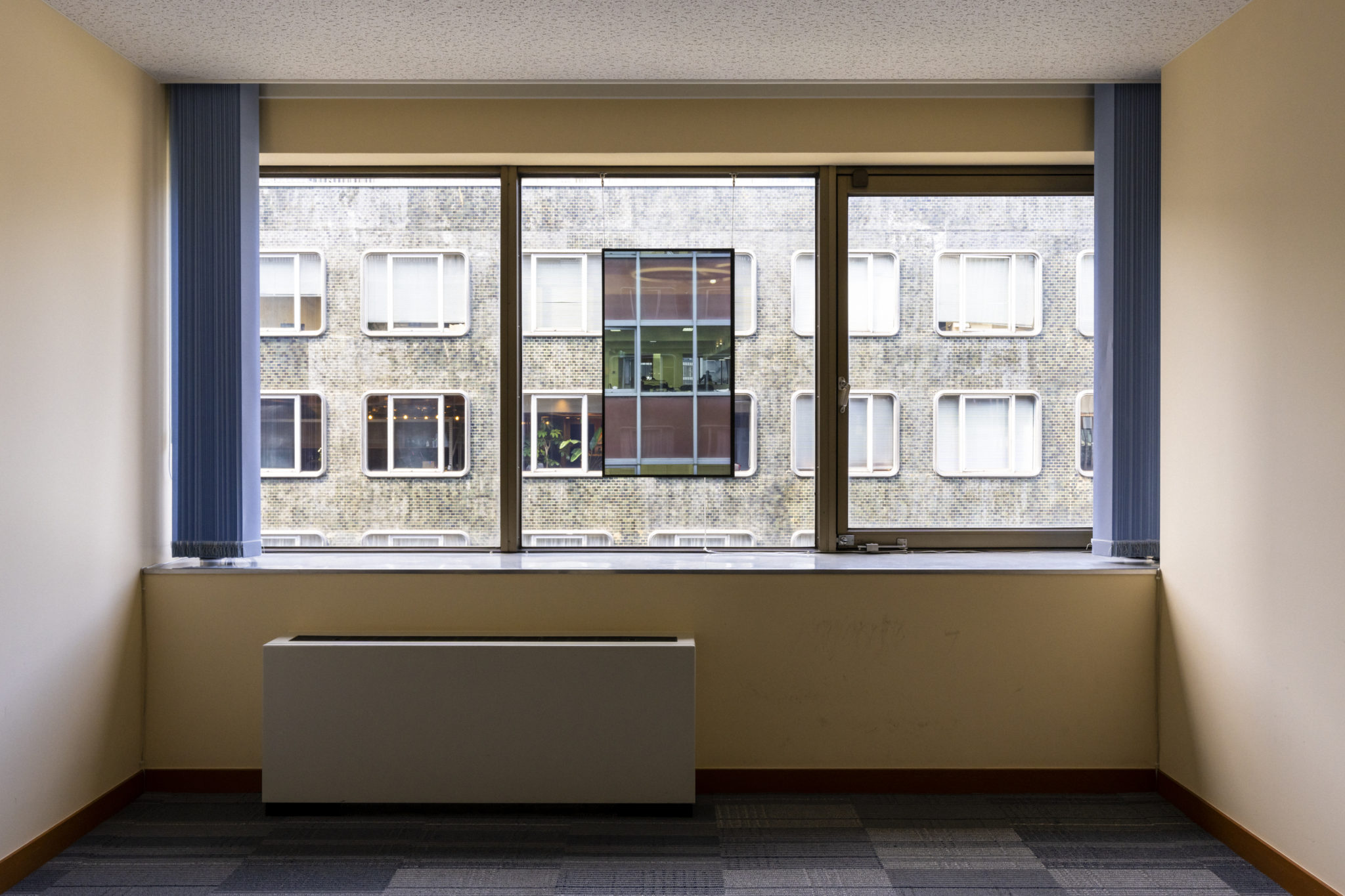
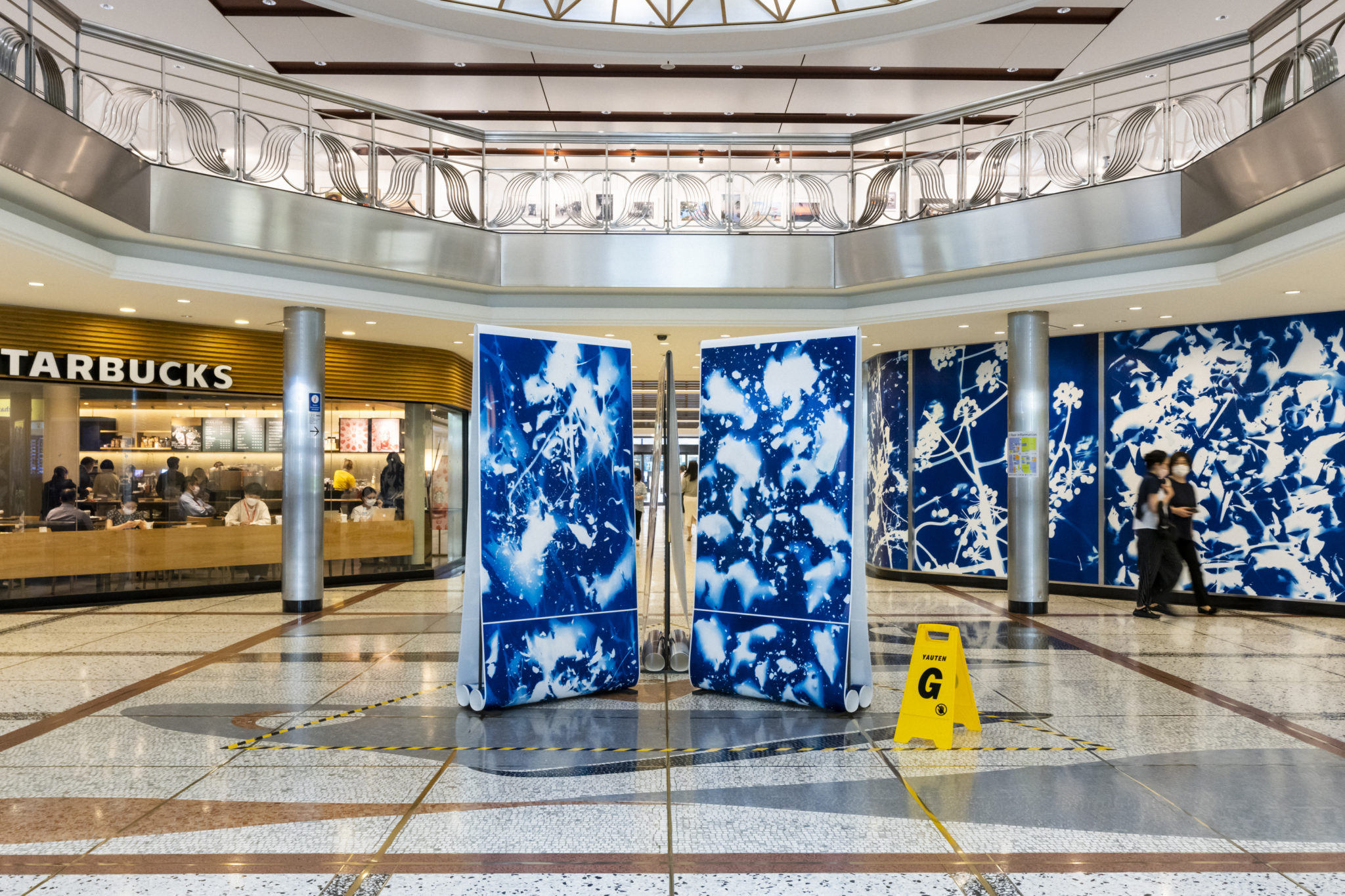
A former barber shop in the basement of the Shin-Yurakucho Building was also turned into a unique art space. Inspired by the fact that marble containing fossils was used in the construction of the building, Hayate Ito presented “Skullpecha~,” a work in which bone-shaped cushions appeared in the ceiling of the room, which was still fitted with barber chairs and mirrors. Meanwhile, Toi Suzuki placed his work “cobweb,” themed on spiders and lichen, at the very end of the room, conjuring up an organic image that breathed quietly and unceasingly underneath the neat and tidy – even mechanical – cityscape.
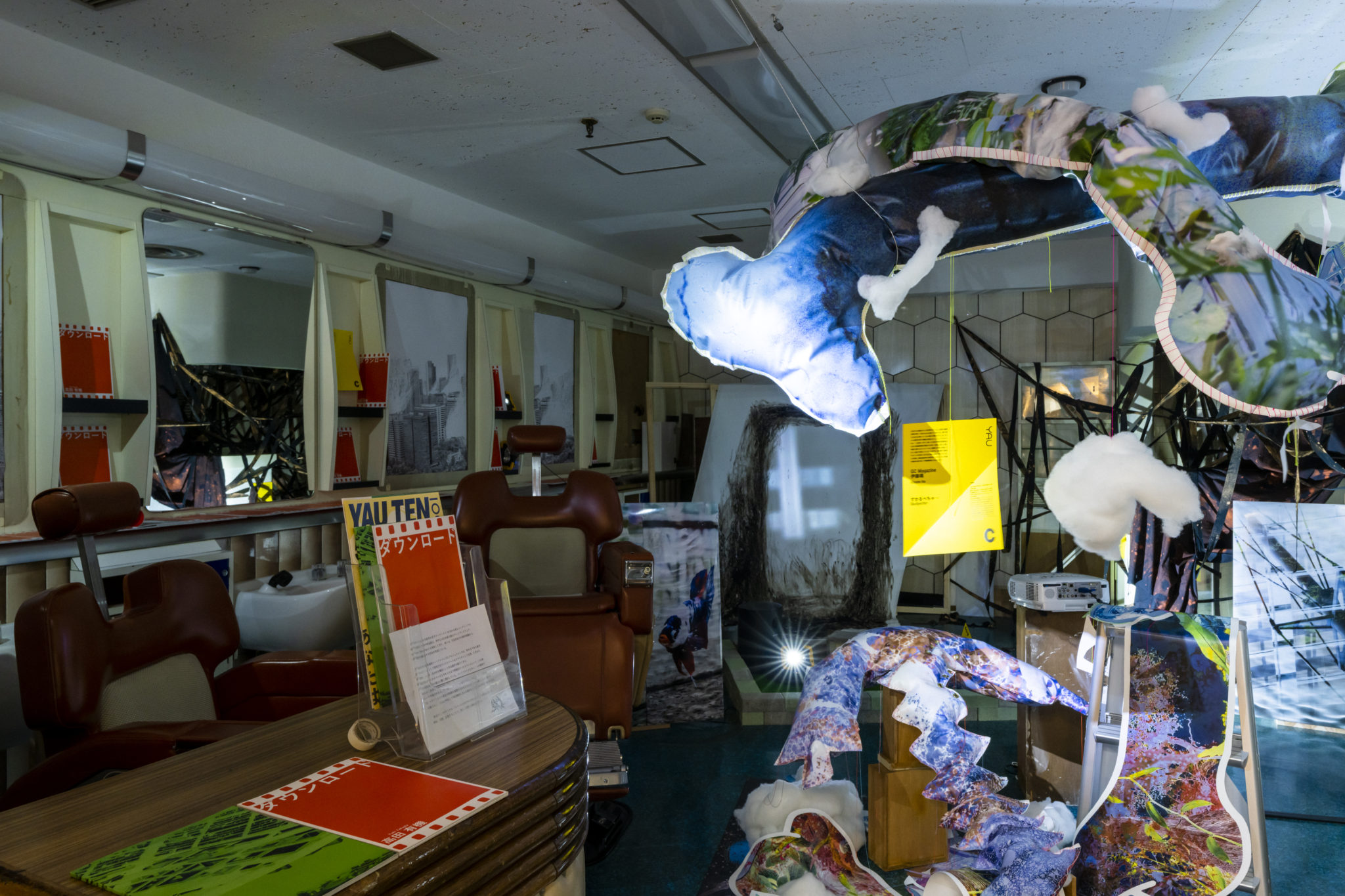
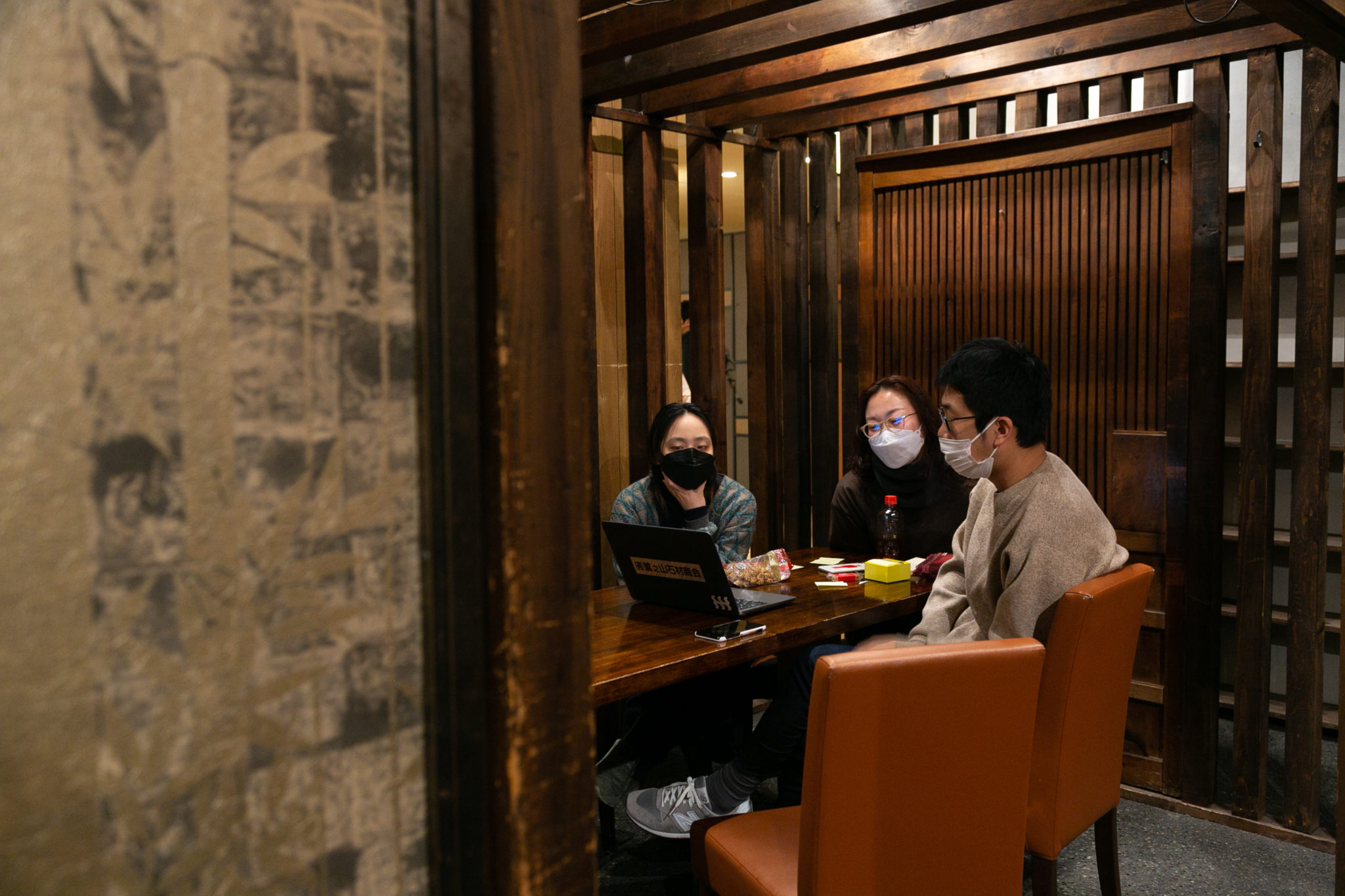
At the same time, YAU is about more than creating and exhibiting art; the event is characterized by its attempts to think about and promote art from multiple perspectives. For example, SNZ (Shinobazu), a network of counselors working with various issues facing up-and-coming artists, set up a consultation center called YAU Counter in the basement of the Kokusai Building. A diverse set of counselors, including Rick Yamakawa, Arata Hasegawa, Junpei Mori, Rika Nakashima, Kanoko Tamura, Min Nishihara, Masayuki Miyaji, Ayaka Ura, and Neko no Yarikata manned the Counter in succession. The space, a former izakaya, had places for people other than clients to sit, and consultations were conducted in an open atmosphere. Consultation was not limited to artists, and when I visited the counter, a woman in her twenties was discussing her thoughts and troubles relating to creating spaces for supporting artists and the potential of such efforts, with Hasegawa responding by sharing all sorts of advice and information.
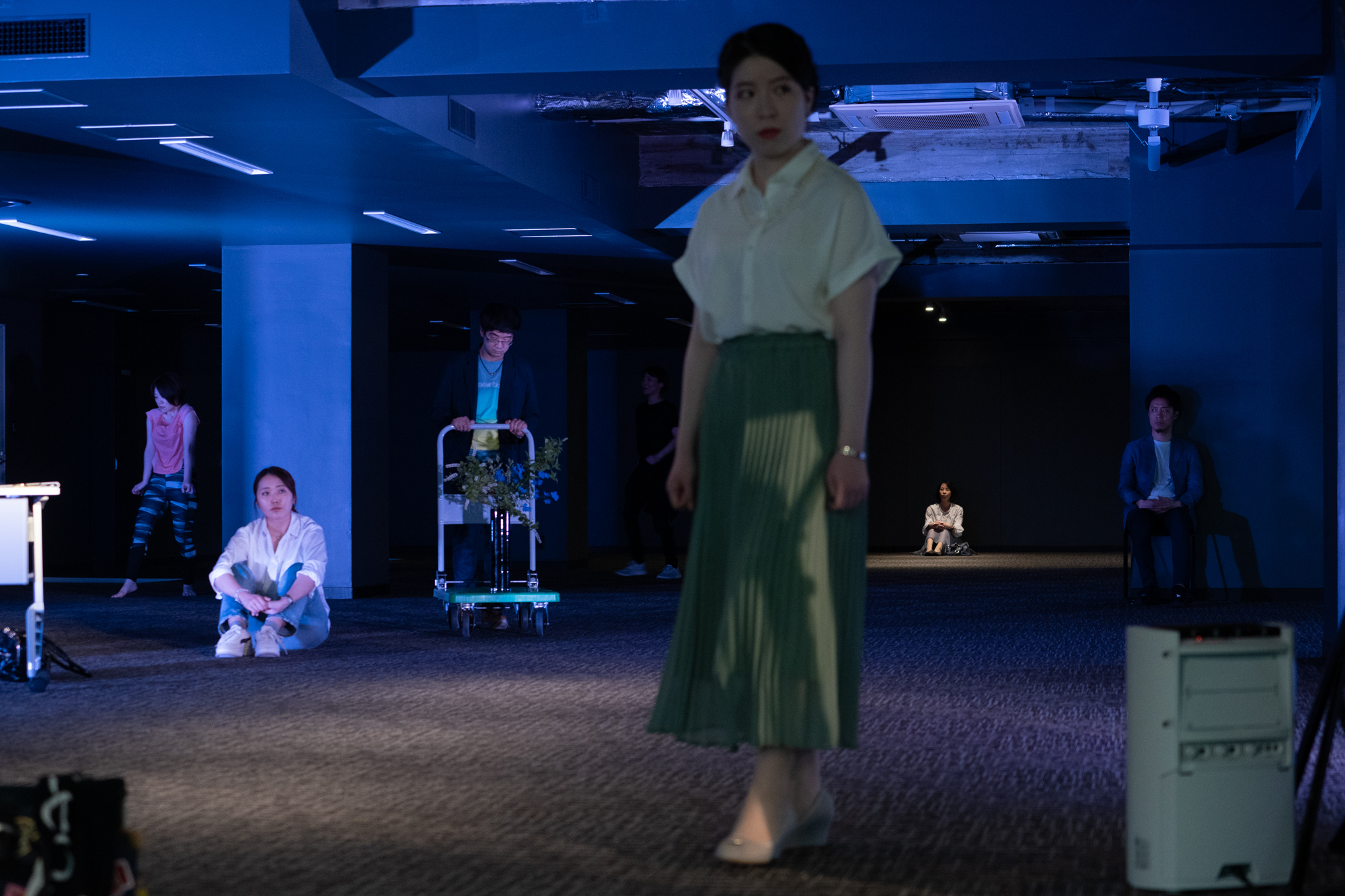
撮影:加藤甫
Studio performances – the dynamism of live bodies
In addition, YAU has served as a rehearsal space for theater and dance and as a co-working space for arts managers. At YAU TEN, Bench – an art managers’ collective engaged with the project’s operation as well as the production of new performances – presented a work directed and composed by Midori Kurata. Among the artists who have rehearsed at YAU, performances were given by Team Chiipro and Shirakan. I attended the Midori Kurata and Team Chiipro shows.
Midori Kurata’s “Ima koko kara, anata no koto ga mieru/mienai (I Can/Can’t See You From Here Now)” was produced on the basis of interviews with people working in the Otemachi-Marunouchi-Yurakucho area and a subsequent workshop called “Creating a Performance? Dance? Play? With People Working in Otemachi, Marunouchi, and Yurakucho.” The performers were all workers in the Yurakucho area who had taken part in the workshop. Representatives of a diverse range of professions, including law firm secretary, real estate company HR professional, institutional investor, and travel agent, spoke about and acted out their personal histories as well as thoughts and memories from their daily lives. The venue, a space for rent on the second floor of the Shin-Kokusai Building, had a low ceiling and pillars that obscured parts of the space from view, making it somewhat peculiar for this purpose. However, together with the performers’ intensity, instability, and brilliance – all different from those of seasoned professionals – it added to the “can/can’t see” dynamic promised by the title and was rather fitting for the performance as a brief encounter with people coming and going in this neighborhood. Kurata’s ability to focus on the “now” of the people who live and work in Yurakucho, to draw out their emotions and present them in the space without imposing or typifying the characteristics of working in the neighborhood, shined through.
Team Chiipro’s “Imperial Palace Running Man” is a lecture-performance of sorts first presented in 2019. The repeat performance at YAU took place very close to the Imperial Palace Front Gardens, which the piece is themed on. In the prewar and wartime period, the Gardens were used to project the prestige of Imperial Japan, while the place also functioned as an evacuation zone after the Great Kanto Earthquake. After the war, Occupation forces staged parades there. Though the square was used as the venue for May Day rallies every year after the first postwar May Day Central Rally, these gatherings were outlawed in 1951, leading to the legal battle known as the Imperial Palace Front Gardens Incident. The dancers’ attempt to run in the now peaceful square, where such an act is forbidden, is superimposed on the hip-hop choreography “Running Man,” and along with quotations from Baudrillard and others is presented stunningly as a form of both escape and struggle.
Relatedly, one month before this performance, the Japanese theater troupe P Company gave a rendition of Hong Kong playwright Candace Chong’s “May 35th,” directed by Yuko Matsumoto. The story tells of an old couple who attempt to lit a candle on Tiananmen Square – where gatherings are prohibited – in memory of their son, who died in the 1989 massacre there. Chong’s play can no longer be performed in Hong Kong, and the playwright was not even able to give a comment on the occasion of her work’s performance in Japan. Both Tiananmen Square and the Imperial Palace Front Gardens now appear tidy and orderly, as if nothing ever happened there. The attempt to harness the power of performing arts to uncover the history hidden underneath is in line with the spirit of YAU’s art urbanism, and Team Chiipro’s repeat performance can be considered an extremely significant undertaking.
Yurakucho’s potential for art urbanism
Attempts at art urbanism have been going on in Yurakucho since before YAU. The Sono Aida art project, which is directed by the artist Akira Fujimoto and makes use of empty rental space and other underutilized real estate, had been operating the Sono Aida# Yurakucho space in a vacant store on the first floor of Mitsubishi Estate’s building for three months in 2020. From the end of 2021, ”Sono Aida# Shin-Yurakucho” sponsored by A-Tom, has started at another vacant space in the Shin-Yurakucho Building. Part of this effort is “Artists Studio,” an undertaking in which artists move their creative environment to the venue, using it for creation, exhibition, and sales over a period of about a month and a half. During YAU TEN, the space was occupied by Ryoichi Fujisaki and Hogalee.
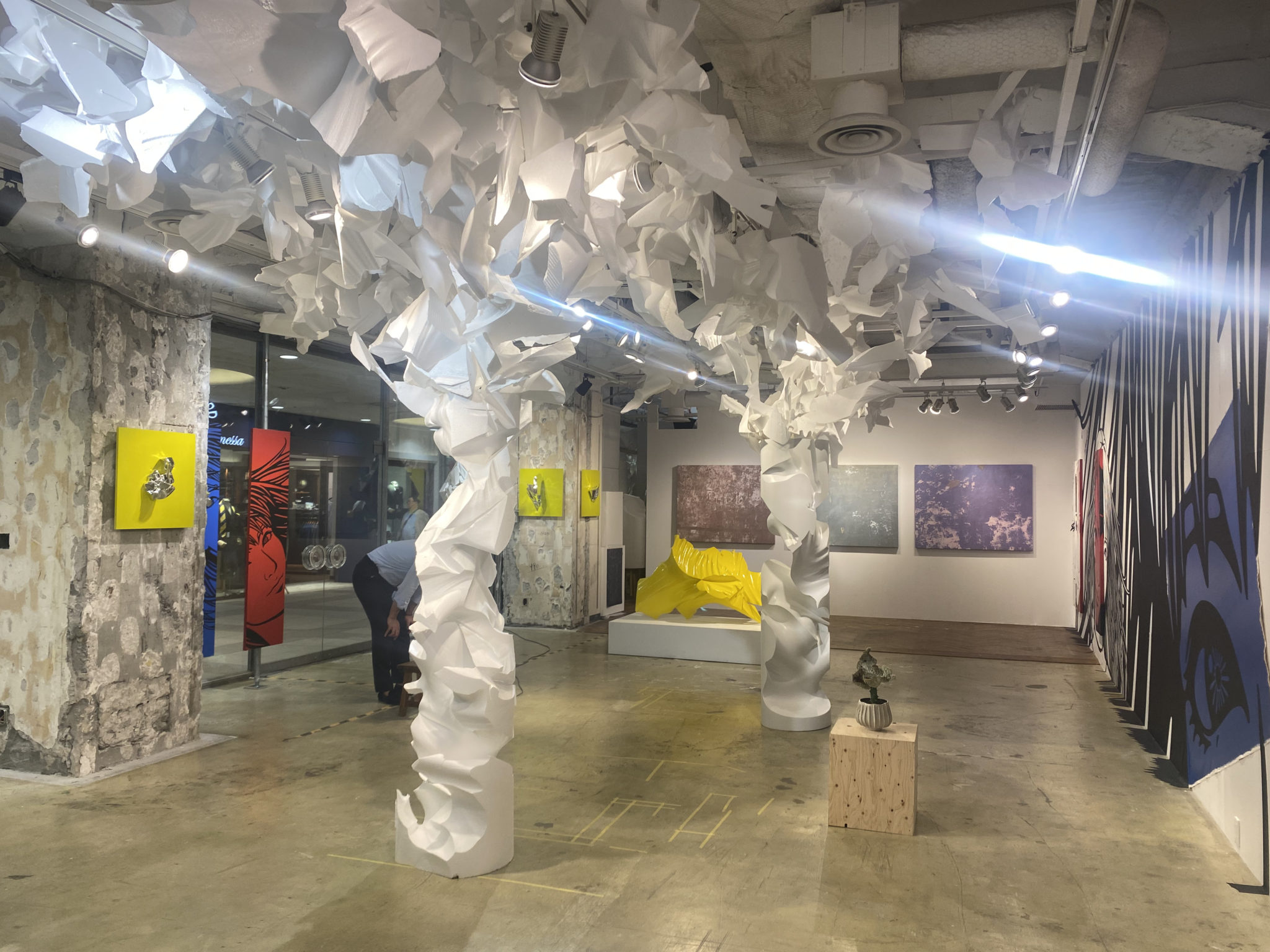
Fujimoto described the significance of participating in YAU as follows:
“The event provided an opportunity for artists who don’t usually interact with each other to learn about their respective activities through lending and borrowing tools, and helping each other out. During YAU, Sono Aida#Shin-Yurakucho received visits from many art people who weren’t aware of our project. I think we were able to convey how interesting things can get when artists are able to conduct their activities in the city center.”
This is what Fujimoto had to say about Yurakucho, in the city center, as a neighborhood and its potential for art:
“Yurakucho is part of Mitsubishi Estate’s Otemachi-Marunouchi-Yurakucho area, which from Monday to Friday is essentially all office workers, but a lot of casual visitors come here over the weekend. I think Yurakucho, which has those two faces of office space and entertainment, is distinguished by its mixture of old (Showa) and new (Reiwa). It is an office district that hasn’t yet undergone redevelopment, and the thing that gives it the greatest potential is its complexity, its gaps in terms of space and time, so the neighborhood is rare in the sense that it can be mixed in with an alternative lifestyle enjoyed by artists.
In this time of renewal in Yurakucho, the fact that Mitsubishi Estate manages its buildings and tenants on an area-wide level enables it to inject value beyond rent collection into the city, which is something unique in central Tokyo. Rising rents tend to drive artists to the suburbs where rents are lower. With the support of A-Tom, the organizer of the Sono Aida #Shin-Yurakucho activities in general, we are beginning to see a new form of art support that goes beyond just collecting artworks. Art activities in the city center function more effectively than those in the suburbs, because artists, when the circumstances are right, can offer a high level of performance that is not based on an hourly rate. We, Sono Aida, Mitsubishi Estate and A-Tom, are working with the belief that such an approach can inspire a change in the atmosphere of urban areas in Tokyo and throughout Japan, which tend to be very similar to each other.”
Sono Aida#Shin-Yurakucho will be continuing until 2023. And I have no doubt that the YAU TEN experiment, which closed on May 27, has made a mark on the city and its people in a variety of forms, and will in time become the source of budding new ideas.
INFORMATION
YAU TEN
Dates: May 20–27, 2022
Venues:
・YAU Studio (Yurakucho Building 10F, 1-10-1 Yurakucho, Chiyoda)
・YAU Counter (Kokusai Building 1F, 3-1-1 Marunouchi, Chiyoda)
・Sono Aida#Shin-Yurakucho Building (Shin-Yurakucho Building 1F, 1-12-1 Yurakucho, Chiyoda)
・Shin-Kokusai Building (3-4-1 Marunouchi, Chiyoda)
and more
Organizer:
Yurakucho Art Urbanism Executive Committee (The Council for Area Development and Management of Otemachi, Marunouchi, and Yurakucho, OMY Area Management Association)


